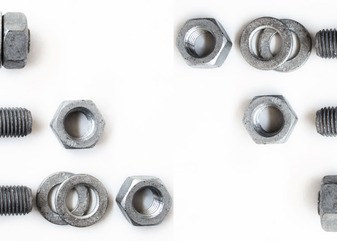 Added to quote
Added to quoteSearch the more than 56,000 items in the catalog.

Galvanizing is a process generally carried out on metallic artifacts, where a layer of zinc is applied as protection against corrosion. To achieve excellent results from the galvanizing process, it is fundamentally important to take into consideratio...
Read more ...
The GeometⓇ treatment is a non-electrolytic, anticorrosive treatment that uses a patented aqueous solution. This thin protective coating layer (between 5 and 10 µm) contains zinc and aluminum in lamellar form and is applied to components by di...
Read more ...
Despite the advent of new treatments and protection methodologies, the most used method with the longest duration over time is hot-dip galvanizing....
Read more ...
Hydrogen embrittlement is a physicochemical process that affects various types of metals, particularly high-strength ones, making them prone to fractures....
Read more ...
Most stainless steel products, screws, and bolts on the market are manufactured in stainless steel A2 and A4. For this reason, we have decided to describe in this article, the world of stainless steel and its variations....
Read more ...
Galvanizing is a process through which a zinc coating is applied to a metal artifact, generally made of steel. This process is used to protect the item from corrosion. We have already covered different types of galvanization in previous articles. In ...
Read more ...
In this new article, we return to the topic of galvanizing, focusing on the theme of galvanizing thickness....
Read more ...
Galvanizing is a process through which materials, mainly steel, are coated with a protective layer of zinc. The coating serves to protect metals from galvanic corrosion and rust. Zinc, being less noble than steel, ensures the protection of the materi...
Read more ...
Corrosion is an electrochemical phenomenon that occurs on metallic materials, causing their deterioration. The phenomenon is generally caused by the interaction between the material and the external environment, but corrosion can be classified into d...
Read more ...
Among the most requested and used materials in the world of manufacturing screws, bolts, and fasteners, stainless steel is an iron-based alloy particularly resistant to corrosion. Also known as stainless steel, it is a material composed of 50% iron, ...
Read more ...
Steel, a ferrous alloy essentially composed of iron and carbon, is one of the most used, resistant, and versatile materials the market currently offers. In addition to the two main substances it consists of, this metal contains other chemical elemen...
Read more ...
Pickling is the treatment used to clean metal surfaces and prepare them for subsequent processing. This procedure can be performed on various materials such as stainless steel, titanium, copper, brass, aluminum, and carbon steel, resulting in a fina...
Read more ...